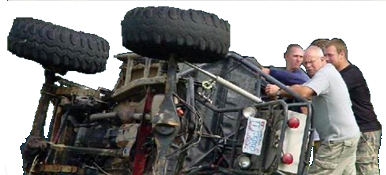crgrissom
Well-Known Member
- Joined
- Mar 20, 2005
- Location
- Raleigh, NC
Like Greg said, the key thing is the number of attachments to the object being pulled, which is like the number of "pulling points."
If you carry a three-handled jerry can by the middle handle, you're holding up all the weight. But if you and someone else each hold one of the handles, the load is split between you. Or if you use two hands to hold two handles, each hand holds half the weight.
Chuck
If you carry a three-handled jerry can by the middle handle, you're holding up all the weight. But if you and someone else each hold one of the handles, the load is split between you. Or if you use two hands to hold two handles, each hand holds half the weight.
Chuck




